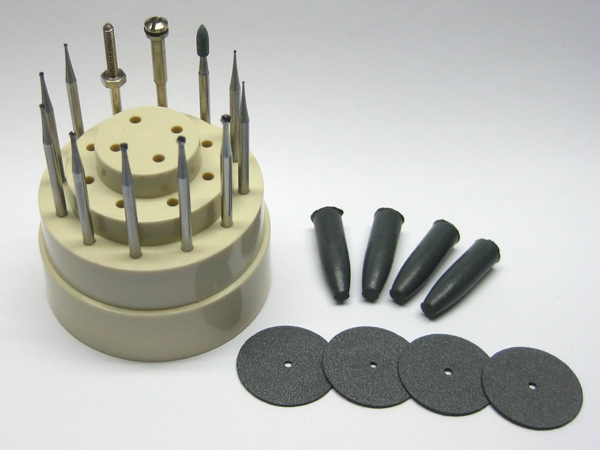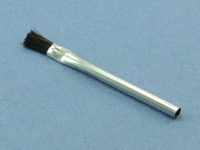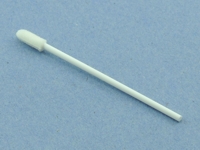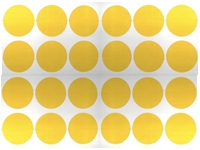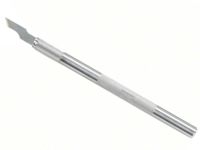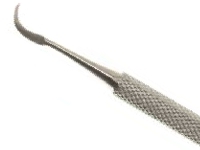|
Outline
This procedure is used to repair mechanical or thermal damage to circuit board base material. This method is used when extended areas of base material must be completely replaced. This method may be used on single-sided, double-sided, or multilayer circuit boards or assemblies.
|
|||||||||||||||||||||||||||||||||||||||||||||||
|
Procedure
Evaluation
|
|||||||||||||||||||||||||||||||||||||||||||||||
Images and Figures
Base Material Repair, Edge Transplant Method

Figure 1. Cut away damaged base material with a saw or milling cutter.

Figure 2. Cut a groove into the edge of the circuit board.

Figure 3. Mill a tongue onto the edge of the replacement base material.

Figure 4. Check fit of new base material. The tongue must mate with the groove in circuit board.

Figure 5. Trim the excess material with a saw or milling cutter.

Figure 6. Complete the repair by drilling holes and applying coatings as required.
|
|||||||||||||||||||||||||||||||||||||||||||||||
3.5.3 Base Material Repair, Edge Transplant Method
This procedure covers major repair of damaged base board around edges on circuit board assemblies.
Minimum Skill Level: Expert
Conformance Level: High
REQUEST FOR QUOTE GUIDES INDEX

Base Material Repair, Edge Transplant Method

Cut away damaged base material with a saw or milling cutter.

Cut a groove into the edge of the circuit board.

Mill a tongue onto the edge of the replacement base material.

Check fit of new base material. The tongue must mate with the groove in circuit board.

Trim the excess material with a saw or milling cutter.

Complete the repair by drilling holes and applying coatings as required.

This clear, low-viscosity, superior-strength epoxy is ideal for many circuit board repair and rework uses.
LEARN MORE

This versatile tool is ideal for milling, drilling, grinding, cutting, and sanding circuit boards.
LEARN MORE

We're here to help with all your challenging circuit board and electronic component rework and repair needs.
LEARN MORE
SLIDESHOW STARTING
❮
❯

